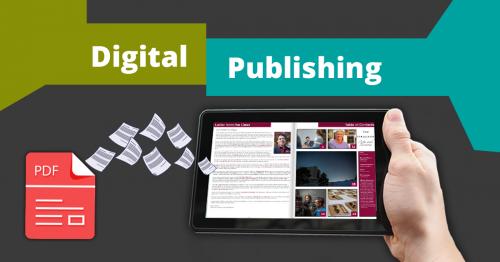E-Publishing Software and its Features

Online or e-publishing is the act of
creating and distributing information in digital form via the Internet. The
term encompasses both print and electronic forms of publication, as well as
content distribution methods that have been established outside the traditional
publishing process. E-publishing can be done through e-publishing
software.
Online or e-publishing can be broken
down into three categories:
Innovative publishing – This is a new way of doing things, like the book you read on your
e-reader. This type of publishing is not just about making things easy for
readers; it’s also about helping content creators reach readers in new ways.
For example, you can use Pinterest to share articles with your followers or
create a blog where you write about how to make homemade gifts for friends and
family members.
E-commerce –
You can sell your products or services online through e-commerce by integrating
e-commerce tools into your website/publication. The integrated e-commerce
solution allows you to add payment gateways, shipping options, and other
advanced features like coupons and loyalty programs to your website.
Content marketing – Content marketing is all about building relationships with your
audience through content they find interesting and useful on your website or
social media pages.
What is an e-publishing software program and what are its
features?
E-publishing or online publishing software
is a type of software program that allows you to create, design, and publish
your digital publications.
It allows you to create an online magazine
or newspaper using your own content and images, or by using pre-made templates.
Digital
publishing software allows you to customize your publication and sell it on
the Internet.
Features:
1. Easy-to-use, user-friendly interface
The main purpose of publishing software is
to make the process of creating publications easier for users and maintaining a
database easier for publishers. There are many different types of publishing
software available on the market today and each one has its advantages and
disadvantages. Some are better suited for individuals or small businesses while
others are better suited for larger businesses or corporations. The best option
will depend on the needs of your company and the type of publication you wish
to create.
2. Flexible layout
The most important feature of any
publishing software package is its ability to produce high-quality documents
with minimal effort on your part! You don't need to be an expert in design or
layout just to use this product because it has been designed to make things
simple for everyone involved! The best thing about this feature is that once
you have learned how to use it properly, you can use it over and over again
without ever having problems with it again! The only drawback is that some
people may find learning how to use this feature difficult since there are so
many options available and all seem different from one another in their way!
3. Supported Platforms
E-publishing
software is designed to work on different platforms
such as Windows, Android, and iOS. This means that you can use your e-publication
on any device with an internet connection. You don’t need to learn another
platform or use multiple apps like Word or Pages if you want to publish your
e-book on multiple devices simultaneously.
4. Customization Options
Post Your Ad Here
Comments